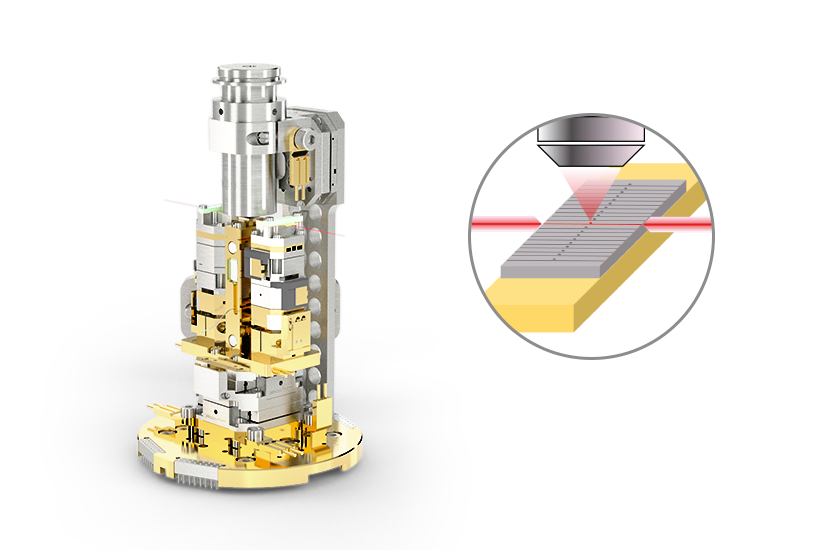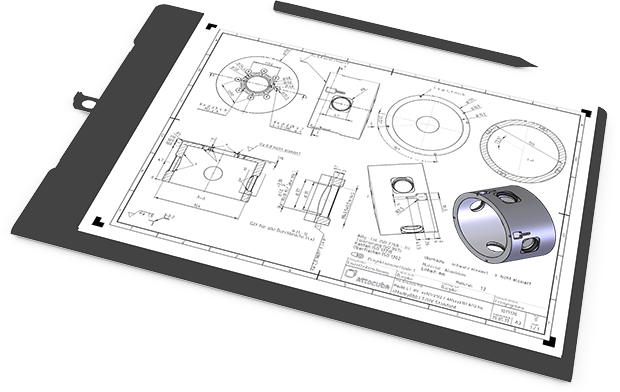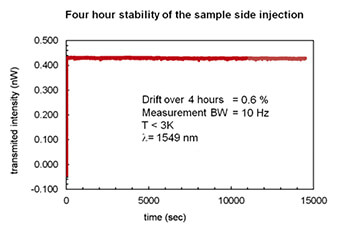
Cryogenic Photonic Probe Station
combined probe station and confocal microscopy
2 independently movable fiber probes
adjust coupling of light into planar waveguides
integrated high-NA objective from above
free-beam confocal imaging of structures
XY motion of the complete fiber probe setup
check probe alignment & vertical probing
Photonic Integrated Circuits (PIC) are hot candidates for becoming the key components of the next generation of optical and quantum communication systems because of the promise of very high information transfer speed, robustness and the compatibility with standard microelectronics devices technology.
Furthermore, the extremely high sensitivity of resonant nanophotonics structures to light-matter interactions makes them candidates for a new classes of sensors with broad range of possible applications in physics, biology and chemistry.
The Photonic Probe Station, which combines two optical fiber probes and a free optical beam Confocal Microscope (CFMI) provides an ideal, ultra stable, extremely compact and easy-to-use table top setup for nano photonic device characterization. The lensed fibers couple light into and out of the the sample planar wave guides. The confocal microscope allows not only for sample surface probing, but also for out-of-plane coupling into photonic structures. The combination with the attoDRY800 cryo-optical table offers a powerful easy-to-use setup for characterization of photonic nanostructures in a temperature range from 4 K up to 320 K.

Specifications
| General Specifications | |
|---|---|
| type of instrument | combined side injection into planar waveguide structures and perpendicular confocal optics on top of the sample, perpendicular injection is possible |
| sensor head specifics | two independent lensed fiber probes with 3 individual degrees of freedom, low temperature compatible apochromatic objective and external confocal optics head |
| Confocal Unit | |
| configuration | compact and modular design, two or more optical channels; standard configuration: one excitation and one detection channel |
| key benefits | quick and reliable alignment of each channel, steering mirror for combined beams long-term stability |
| quick-exchange of optical components | optional piezoelectric rotator with filter mount |
| pinhole configuration | two pinholes (fiber apertures), different illumination and collection wavelength possible |
| pinhole size | dependent on fibers, typically 3 .. 9 µm mode field diameter |
| compatible LT-objective | LT-APO/VIS, LT-APO/VISIR, LT-APO/NIR (see accessory section for more information) |
| inspection unit | sample imaging with large field of view: ~ 100 µm |
| long-term stability | lateral drift of confocal spot typically <2 nm/h |
| Sample Positioning | |
| total travel range | fiber probes 3 x 3 x 2.5 mm³ (closed loop) |
| sample 6 mm x 6 mm (closed loop) | |
| step size | 0.05..3 µm @ 300 K, 10..500 nm @ 4 K |
| sample holder | carefully thermalized, quick exchange mechanism, including calibrated temperature sensor and heater |
| Suitable Operating Conditions | |
| temperature range | < 3K..300K |
| operating pressure | 1E-6 mbar .. 1 bar |
| Suitable Cooling Systems | |
| compatible cryostats | attoDRY800 (flow cryostats on request) |
| Compatibility with Electronics | |
| laser | LDM600 laser/detector module (for detailed specifications please see attoCONTROL section) |
Customer Feedback
Dr. Ivan Favero
Université Paris Diderot, CNRS, Paris, France
The photonic probe station has essentially solved cryogenic and mechanical stability problems in our experiments, such that we can today concentrate our efforts on other conceptual and technical aspects. Simply a great scientific instrument!


